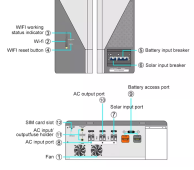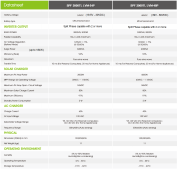Jeff From NJ
New Member
- Joined
- Dec 2, 2021
- Messages
- 68
I'm in the U.S. and looking at picking up a hybrid MPPT controller and trying to figure out if I should get a 110V output or a 220V output (60Hz). The plan is to hang a subpannel off the main breaker and connect a few necessary appliances to the subpanel to be powered by solar in case of grid down.
Can I get a 220V output controller and power the subpannel with the 220V, using 110V where needed and 220V where needed, or do I need to get some sort of device to step down the 220V for all the breakers that will power 110V appliances and wire the 220V directly to the two breakers that will power the two appliances that require 220V?
Thanks all!
Can I get a 220V output controller and power the subpannel with the 220V, using 110V where needed and 220V where needed, or do I need to get some sort of device to step down the 220V for all the breakers that will power 110V appliances and wire the 220V directly to the two breakers that will power the two appliances that require 220V?
Thanks all!




